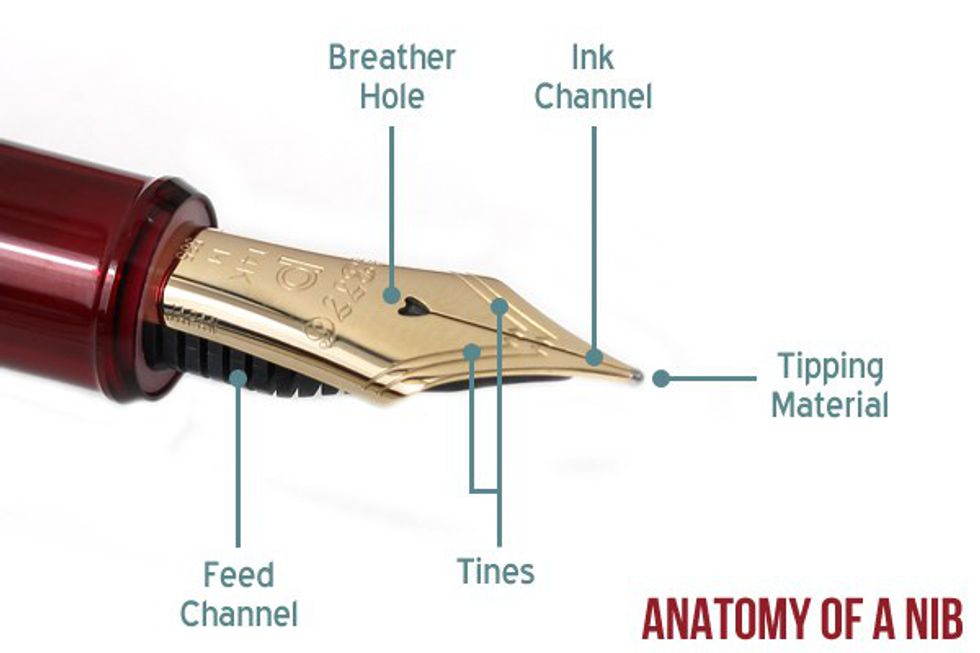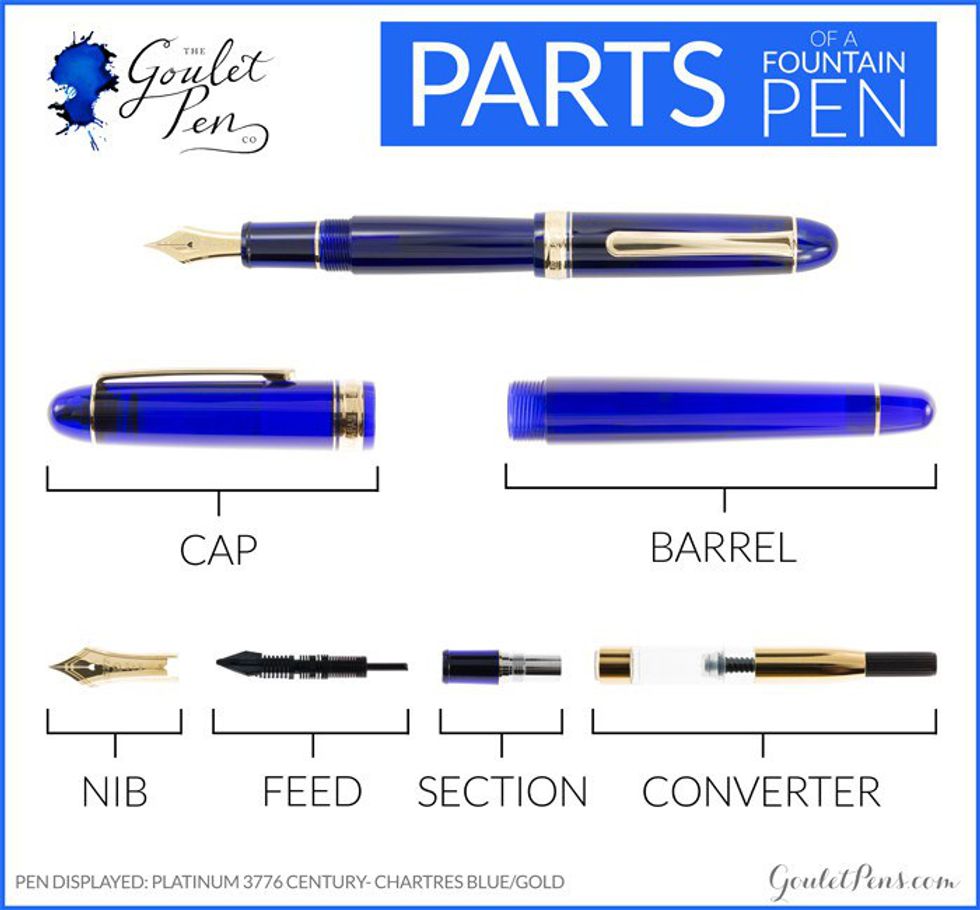There are few things as classically iconic as fountain pen. My love affair with fountain pens started several years ago, while I was studying abroad in Germany for a summer. I initially purchased my first pen at a time when I was starting to get serious about my writing. If I was to become a serious writer, I would need a serious writing implement.
The difference may seem superficial, but a well-made fountain pen is to a Mercedes as a Bic ballpoint is to a beat-up Toyota Camry. A ballpoint pen requires pressure to move across the page, but a fountain pen glides effortlessly. Written mid-terms used to cause severe hand cramps for me. Since I switched to a fountain pen, I have been able to write for nearly two-hours without pausing.
I will admit that there are a few trade-offs in using a fountain pen. For one, they are largely impractical. Like all pens, they run out of ink eventually, but fountain pens will do so faster than a regular pen. I carry a replacement cartridge of ink with me to class in case my pen runs out. If you choose to use a fountain pen with any amount of frequency, you will need to re-ink it in some way at least once a week.
With that being said, a fountain pen is also going to last you a lot longer. This is simply a matter of construction. Even the cheapest usable pens cost as much as a package of several pens that you would purchase at Walgreens, but you will not be losing them anytime soon. There is a certain heft to a quality pen that reminds you that it is on your person. If you pull the trigger and decided to buy a fountain pen, you will be paying for quality, not quantity. I have been using the same pen heavily for almost three years without an issue.
A fountain pen will require a bit more maintenance than one might be used to. The pen chamber needs to be cleaned if you are switching inks and you will wind up with ink all over your hands at some point, regardless of how clean your pen might be. A nib may need to be replaced after a drop. However, these are minor inconveniences and they should not deter you from pursuing the hobby. The world of fountain pens is quite enjoyable. You can customize your writing in a number of ways, from the color of your ink to the size of the line that your pen creates. With a little bit of time and effort, you can find a comfortable and elegant writing instrument.
If you have made it this far, you are a clearly interested in using a fountain pen. Before taking the plunge, you should acquaint yourself with the various parts of a pen. Most of them are pretty self-explanatory, so I will not go into detail to explain what a pen cap is.
The nib is the part of the pen that actually does the writing. It creates a controlled leak in the ink chamber that allows it to write effectively without getting ink all over the place. The ink flows out from the feed channel, typically made of ebonite or plastic, and into the space between the tines. The tines separate ever so slightly, and allow the ink to reach the page in a controlled fashion. When buying a fountain pen, you will typically have your pick of nib size. Most companies offer at least three sizes, the most common being medium, fine, and extra fine. Stub and broad nibs are also available, but they are more suited for calligraphy.
The Ink Chamber refers to several different mechanisms in which ink is stored in a pen. Most older pens use a lever or piston system to fill the pen. I have never encountered one of these pens in person, but I believe that they use a syringe-like mechanism to suck the ink up into the pen through the nib. This mechanism is rarely used in modern pens, which use a cartridge or a converter. To use a cartridge or converter, one must unscrew the barrel of the pen and place the mechanism inside the pen itself. A cartridge is a plastic tube that is already filled with ink, which is discarded when it is empty. A converter allows one to use bottled ink by using a piston-like mechanism to fill a tube, much like older fountain pens. Cartridges are more convenient, but a converter and bottled ink are cheaper in the long-run.
When entering the world of fountain pens, you have several practical options as far as starter pens go. A functional fountain pen and ink can be purchased for under twenty dollars. The most popular choices for an entry level pen are the Pilot Metropolitan and the Lamy Safari. Both can be purchased in a variety of colors. However, it is worth noting that Lamy pens only accept proprietary ink cartridges, so a converter is essential if you want to use other inks. If these pens are too pricey, the Jinhao pens manufactured in China are a good option. Most Jinhao pens are under ten dollars, but they may take a few weeks to arrive. Fortunately, they ship with a converter, so you have your choice of inks.
Once your shiny new pen arrives, you will be tempted to ink it up and start writing immediately. However, slightly more patience is necessary. Most fountain pen enthusiasts recommend that you rinse the nib and feed with dish soap and water to remove any leftover dust particles from the manufacturing process. A quick rinse is usually sufficient before inking your new pen. You should let the feed dry before attempting to write. The residual water will dilute the ink and make the initial experience less than ideal.
After everything is set up, feel free to start writing. Write your name. Write your mom’s name. Write "butts" a few times, just for the sake of writing such a low-brow word with a high-brow writing instrument. In all seriousness, take some time to actually get used to holding the pen. The nib will eventually adjust to your handwriting, so it is important to not let other people use your pen for extended periods of time. The process of nib tuning will not be visible to the naked eye. Do not try to bend the nib for any reason. You will break your shiny new pen. I wish you happy writing.



















